On average, children go through anywhere from five to 10 diapers per day during the first two years of their life. That amounts to 35-70 diapers per week, 140-280 per month, and 1,680-3,360 per year.
That’s a lot of diapers, but don’t worry – it’s temporary.
Eventually, your child will learn how to use the toilet, and your diaper-changing days will come to an end. As exciting as this is for both you and your child, it can also be a difficult milestone to accept as a parent.
RELATED: These 5 Gadgets Will Make Potty Training A Breeze (Or At Least Kind of Fun)
After all, it’s one of the first signs of independence in a child.
With that said, all children grow and develop at different rates – and learning how to use the potty is no different. It’s not always a perfect process, and there are growing pains, but it’s important to remember that you only get to live this experience once with your child – so make sure you make the most of it!
And if you need a little help and direction – well, that’s what we’re here for!
What Age Do Most Kids Start Potty Training?
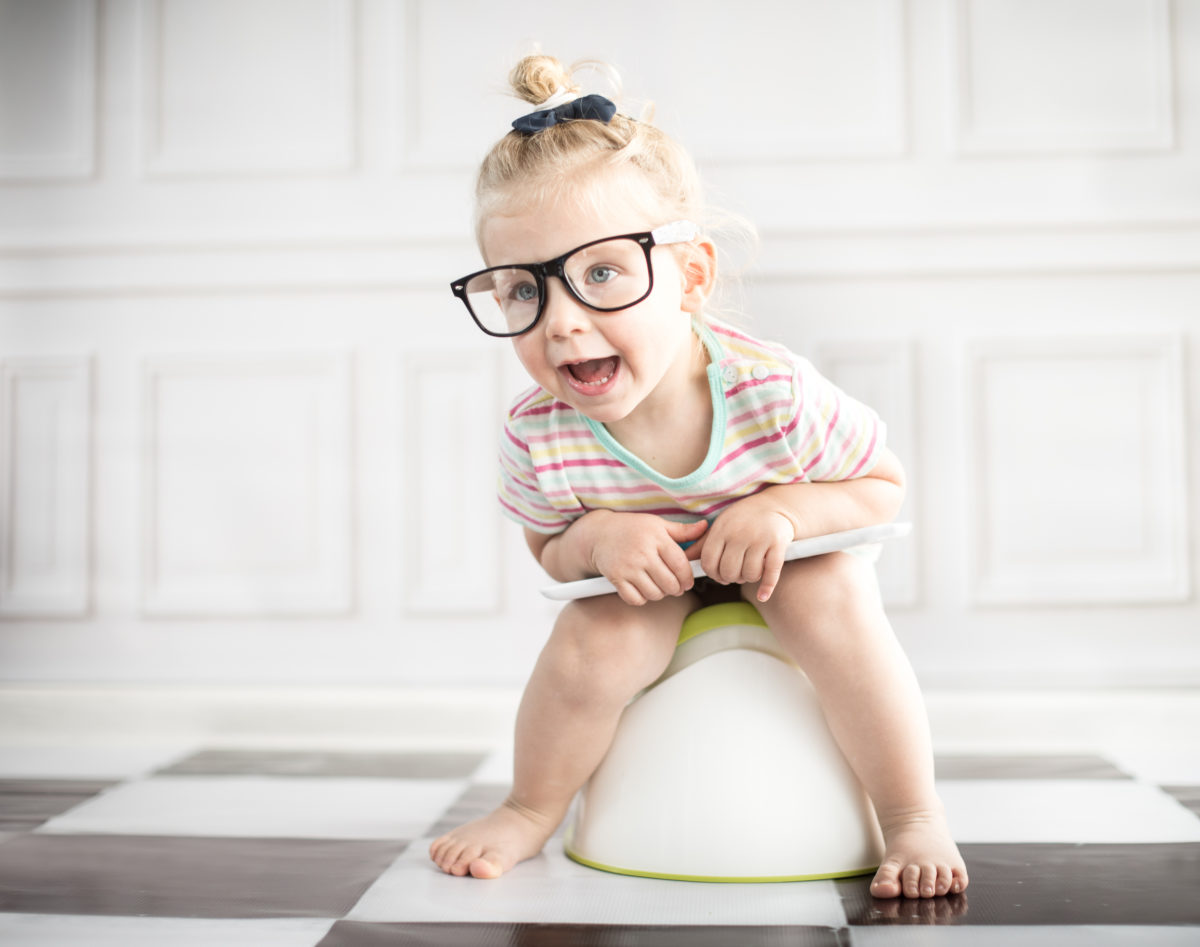
This is a difficult question to answer because every child is unique, and readiness can vary significantly from one to the next, but most children start potty training between the ages of 18 months and 3 years.
With that said, some kids are ready by 11 months, and some not until four years.
Signs of readiness include being able to follow simple instructions, expressing interest in using the toilet or wearing underwear, staying dry for longer periods during the day (over two hours), communicating when they are going or need to go to the bathroom, and being able to dress or undress themselves.
If your child is showing these signs, it might be time to start potty training – yay!
What’s important is that you don’t rush your child into something they’re not ready for or comfortable with. And always consult with your pediatrician before making any major changes in your son or daughter’s life.
Potty Training Tips for Boys and Girls
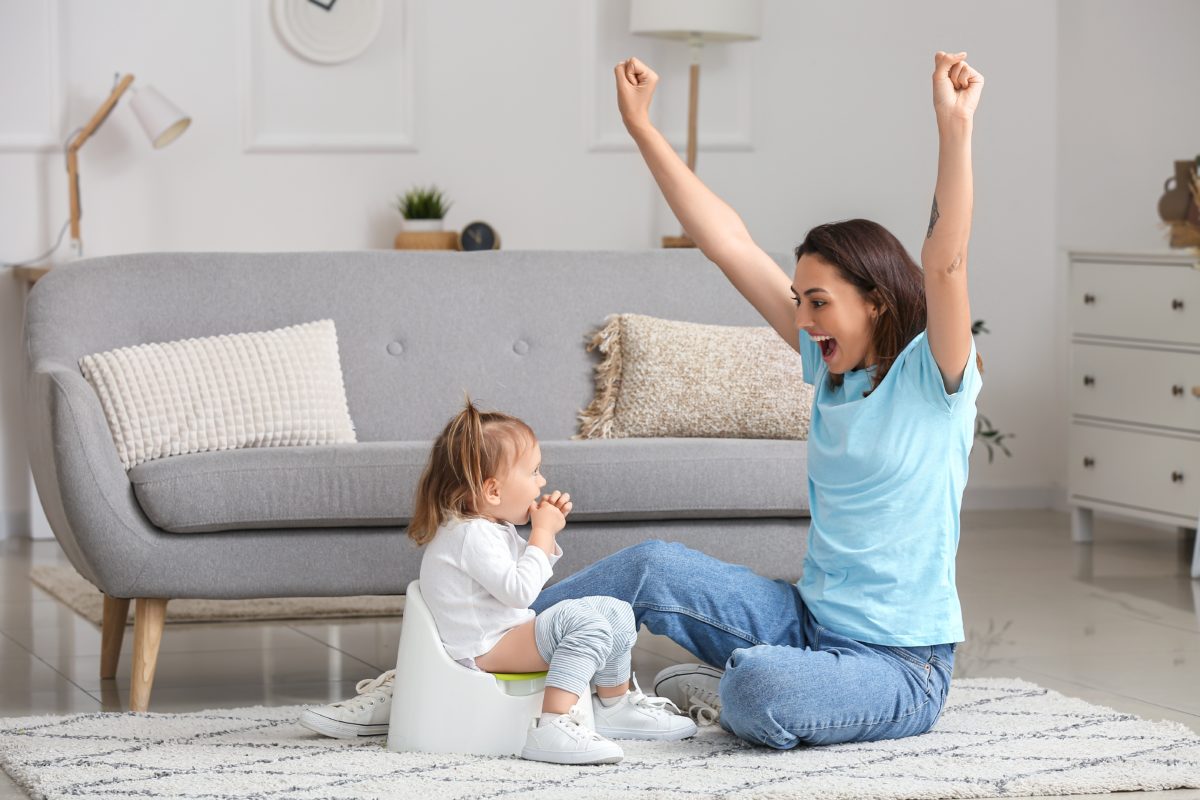
Learning to use the toilet properly is a process that involves both their body and mind – without control of both, children often struggle through the potty training process, which is why readiness is so important.
There are three primary stages to the potty training process:
1. Learning the signals their bodies give when it’s time to urinate or pass a bowel movement.
2. Learning the nuances of using the toilet, pulling down their pants, and pulling them back up.
3. Learning the importance of using the toilet and, more importantly, being willing to use it.
Parents not only have to recognize the right time to begin potty training, but we also need to make this process fun and interactive for the child – something that’s easier said than done, but not impossible!
To ensure all parents are equipped with the knowledge and tools needed to support their child through this critical phase of their life, we’re going to break down 15 of our most tried and true potty training tips.
Let’s get started!
15. Let Your Child Pick Out a Potty
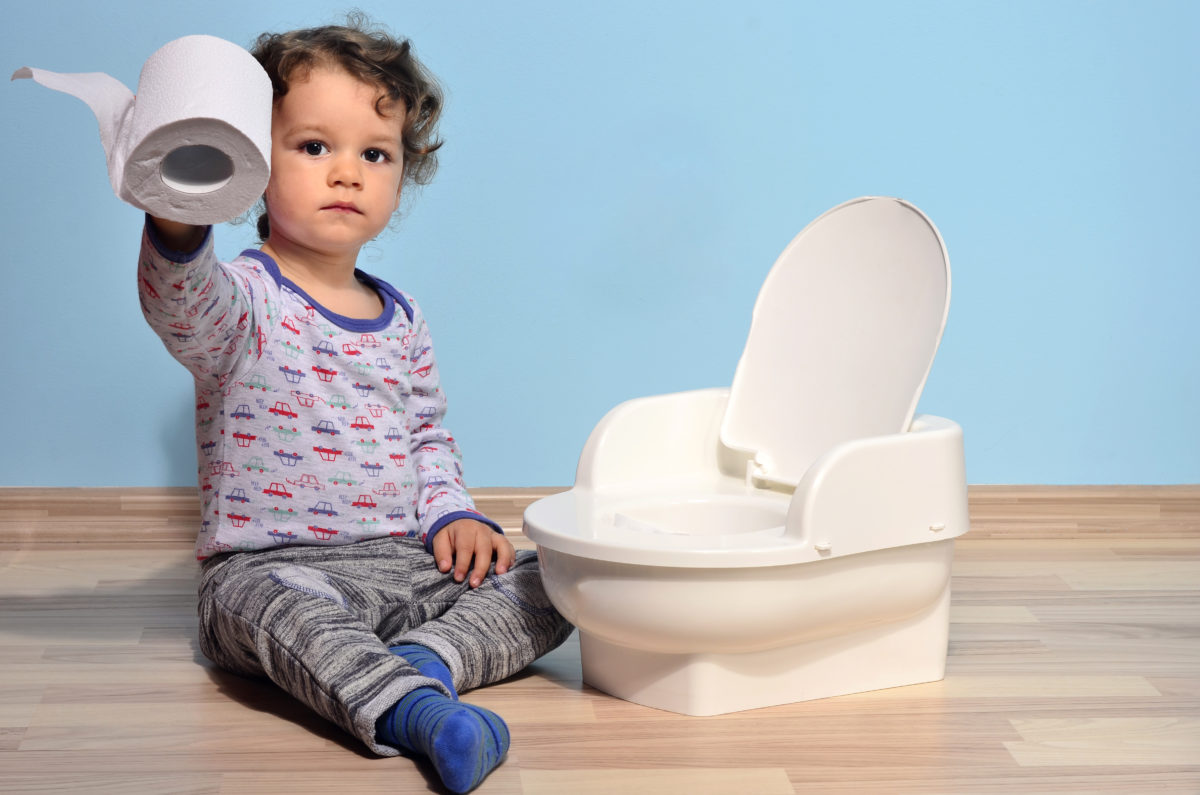
Picking out a potty should be a fun and exciting experience for you and your child. There are plenty of options to choose from and several different types, depending on what your kid is most comfortable with.
Stand-alone potty seats are the best way to ease your child into the process, but you can eventually transition to a toilet adaptor that fits over the actual toilet – when they’re ready for it, of course.
Either way, it’s important that your child can comfortably sit on the toilet with both feet flat on the ground. They should also have easy access to toilet paper and a step stool – for both the toilet and the sink!
14. Let Your Child Pick Out Their Underwear
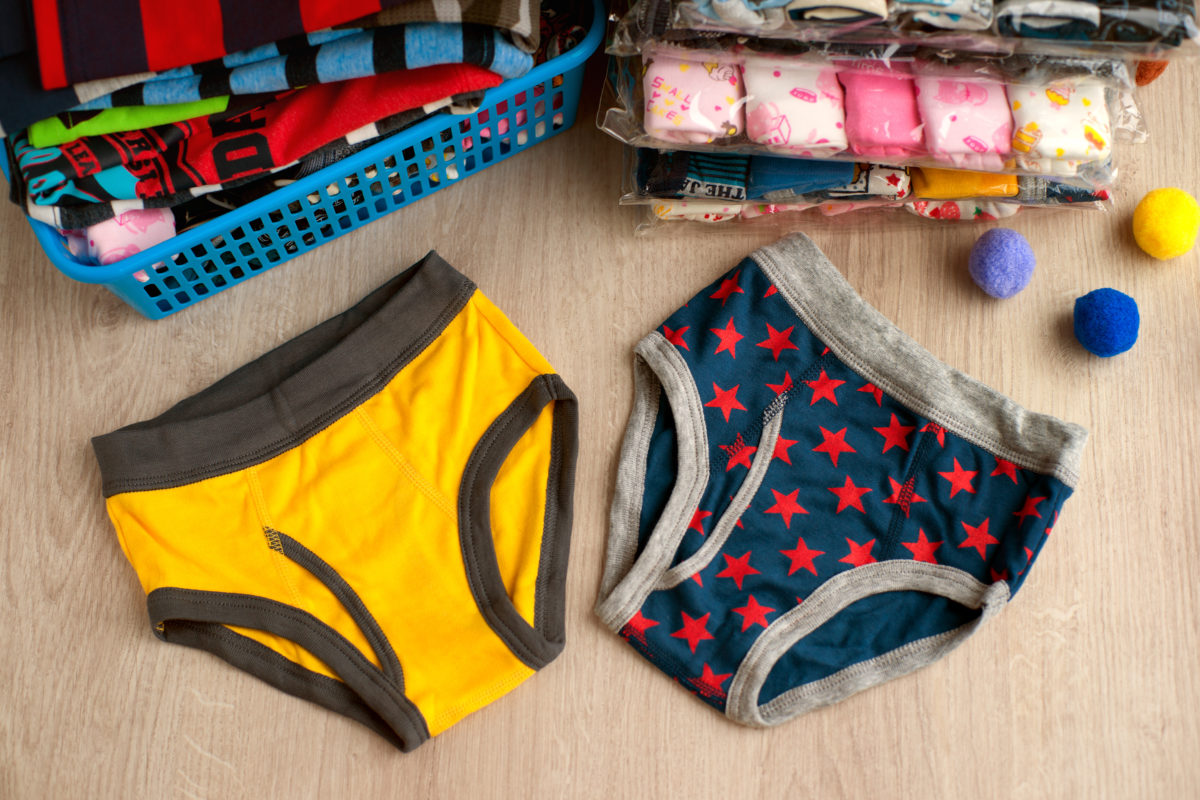
Letting your child pick out their potty will ensure they’re happy with the decision, but you should extend those privileges to their underwear – let them pick out the design, color, and type that they want.
It not only gives them a sense of ownership and pride in their new undies, but it also makes them feel more confident when transitioning from diapers to underwear and increases motivation and cooperation.
You can also buy the underwear before they start the potty training process. Telling them they’ll get to wear their new underwear once they start the process will make them more excited when that day comes.
13. Consider the Location of Their Potty
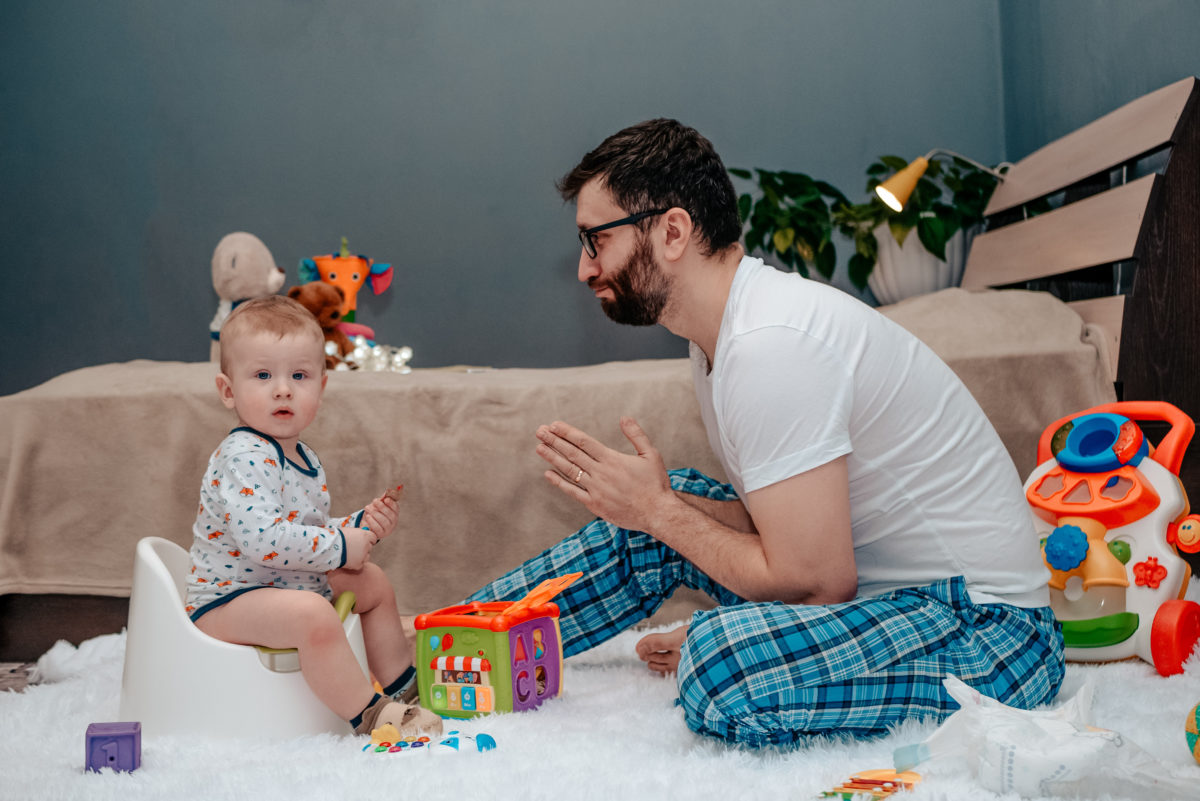
Believe it or not, the location of the potty can significantly impact your child’s willingness or readiness to start potty training. If they don’t yet feel comfortable in the bathroom, try putting it in their bedroom.
Even if they do feel comfortable in the bathroom, I recommend having two separate potties – one in the bathroom and one in the bedroom. That way, they have a toilet handy when they wake up at night.
No matter where you put the potty, make sure it’s in an accessible location and one that promotes privacy and comfort. Try to avoid moving it from one room to the next, and always make sure it’s in a safe area.
12. Encourage a Regular Routine
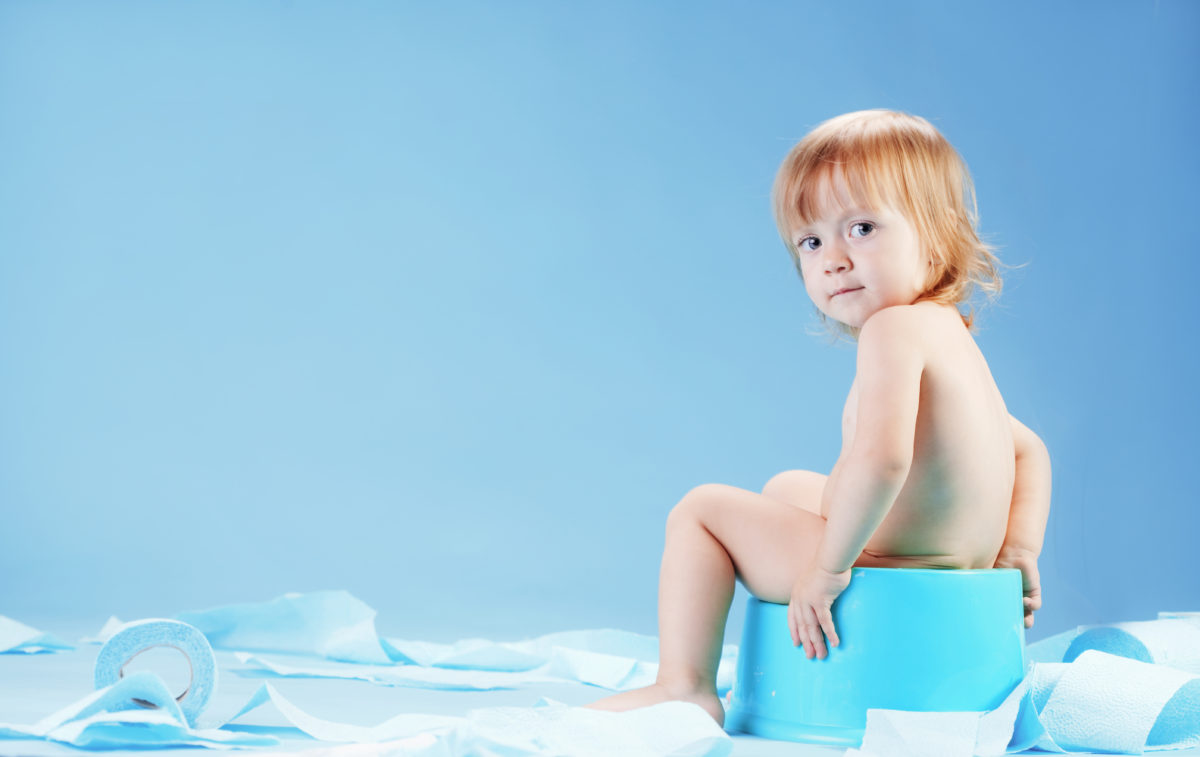
Establishing a regular routine while potty training helps provide a sense of predictability and security that is crucial for young children navigating this new territory – which can be a scary one for most children.
By integrating scheduled bathroom breaks, clear signals, and a structured approach to using the toilet, parents can create a nurturing environment that promotes learning, independence, and progress.
For example, I recommend teaching your child to use the bathroom before going to bed, after waking up, and before (or after) they eat. The repetition will help reinforce new habits and ensure a smooth transition.
11. Use a Potty Training Sticker Chart

One of the most important roles a parent has during the potty training process is encouraging their child and keeping them motivated. One of the best ways to achieve this is with a potty training sticker chart.
Many parents already implement something similar as the child gets older – either for chores, school, or hobbies – but getting them used to the concept early on can help them understand its importance.
I suggest hanging the chart in the bathroom or in their bedroom, depending on where their potty is. When they go potty successfully, give them a sticker and let them place it on the chart – it’ll make them happy!
10. Keep Your Child Occupied While On the Potty
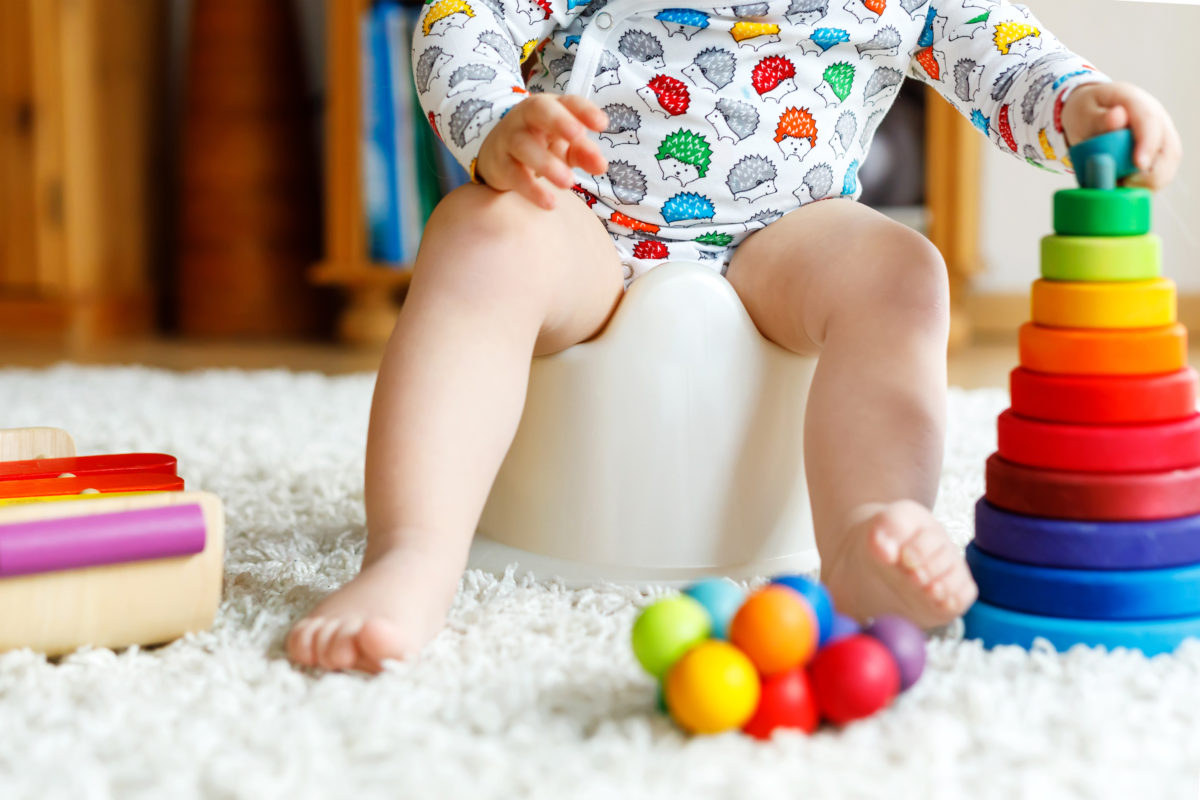
Keeping your child occupied and engaged while on the potty can turn potty training into a more positive and less daunting experience for everyone involved. Better yet, there are a variety of ways to do this.
Giving them a book to read, a toy to play with, or a game to play can help them feel more comfortable and relaxed – which, as we all know, is very important when taking a potty break, no matter how old you are.
It’s important to ensure that the activity is safe and can be easily managed in the bathroom environment, but keeping them busy will help them pass the time and reduce the amount of resistance when training.
9. Sing a Potty Training Tune
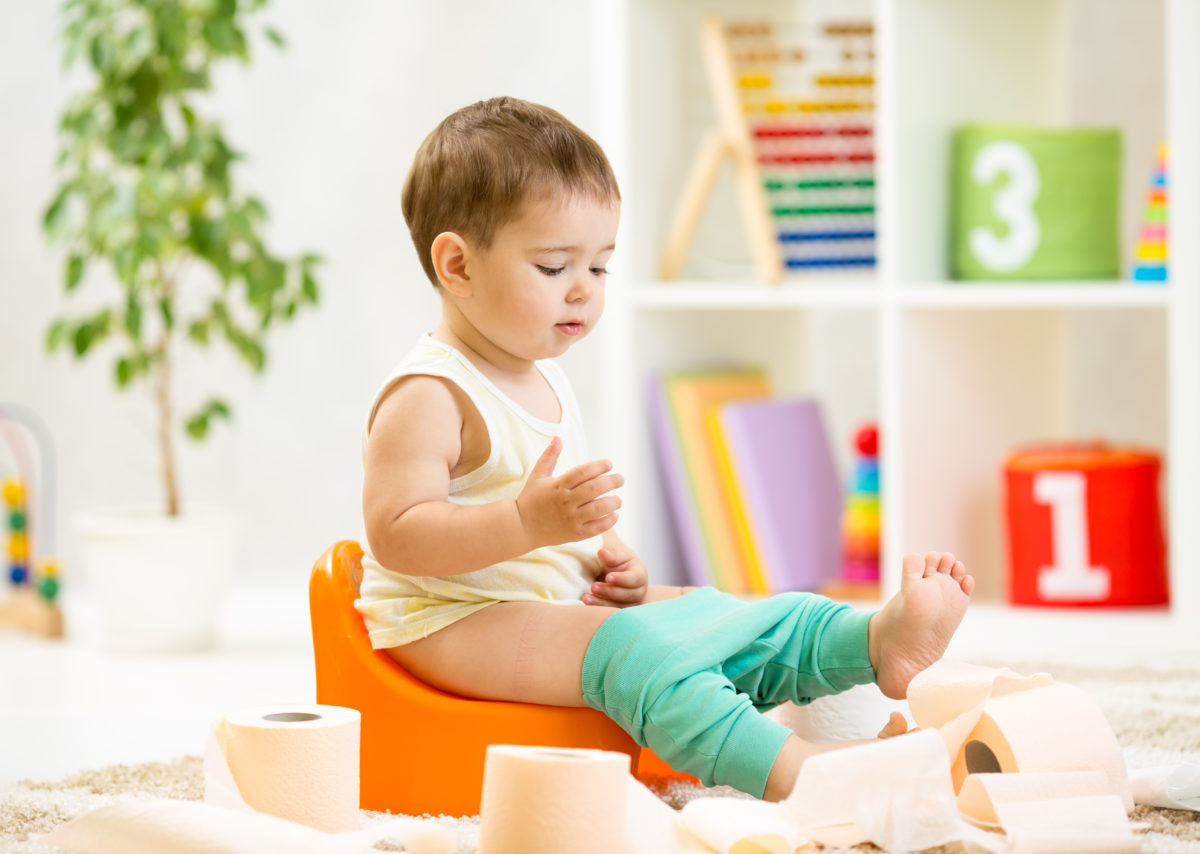
Through catchy tunes, rhythmic melodies, and encouraging lyrics, potty-training songs transform your child’s learning process into a more engaging and enjoyable experience – one that promotes positivity.
The ‘Pinkfong Baby Shark’s Potty Song’ is one of the most popular today, but others include ‘Daniel Tiger’s Stop And Go Potty Song,’ the ‘Cocomelon Potty Training Song,’ and ‘Elmo’s Potty Time.’
Find one that your child enjoys and learn it like the back of your hand. Hearing you sing it will encourage them to sing along – and you might even hear them sing it when they’re using the potty all by themselves!
8. Try the Naked Method
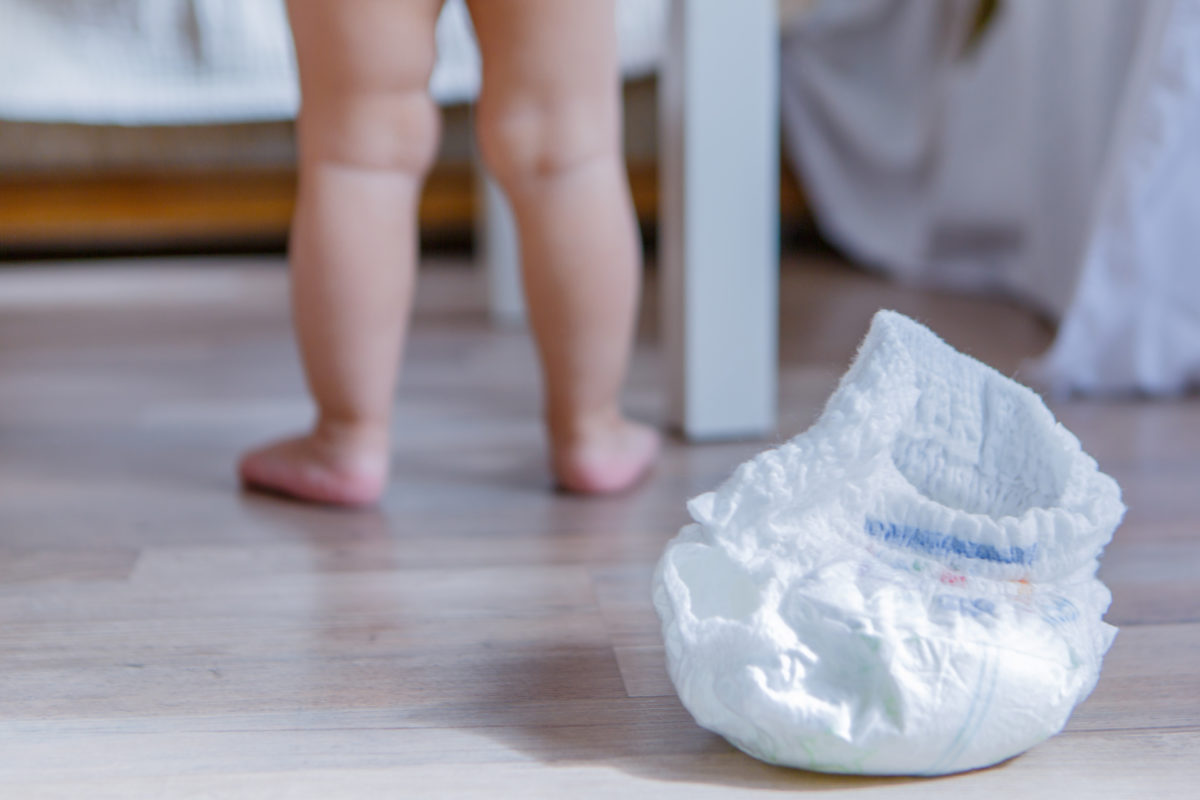
The naked method is fairly straightforward: Let your child run around the house without clothes on (or a diaper). When it comes time to pee or poop, your child will have no other option than to ask for help.
Of course, this method won’t work for every child. Even those who find success with it will leave a number of messes around the house. You might need to do some extra cleanup, but they’ll eventually learn.
Some parents say this method can train your child to use the toilet in as little as three days. While that’s certainly possible, it’s an unrealistic goal when potty training your child – so don’t feed into it too much.
7. Show Your Child How It’s Done
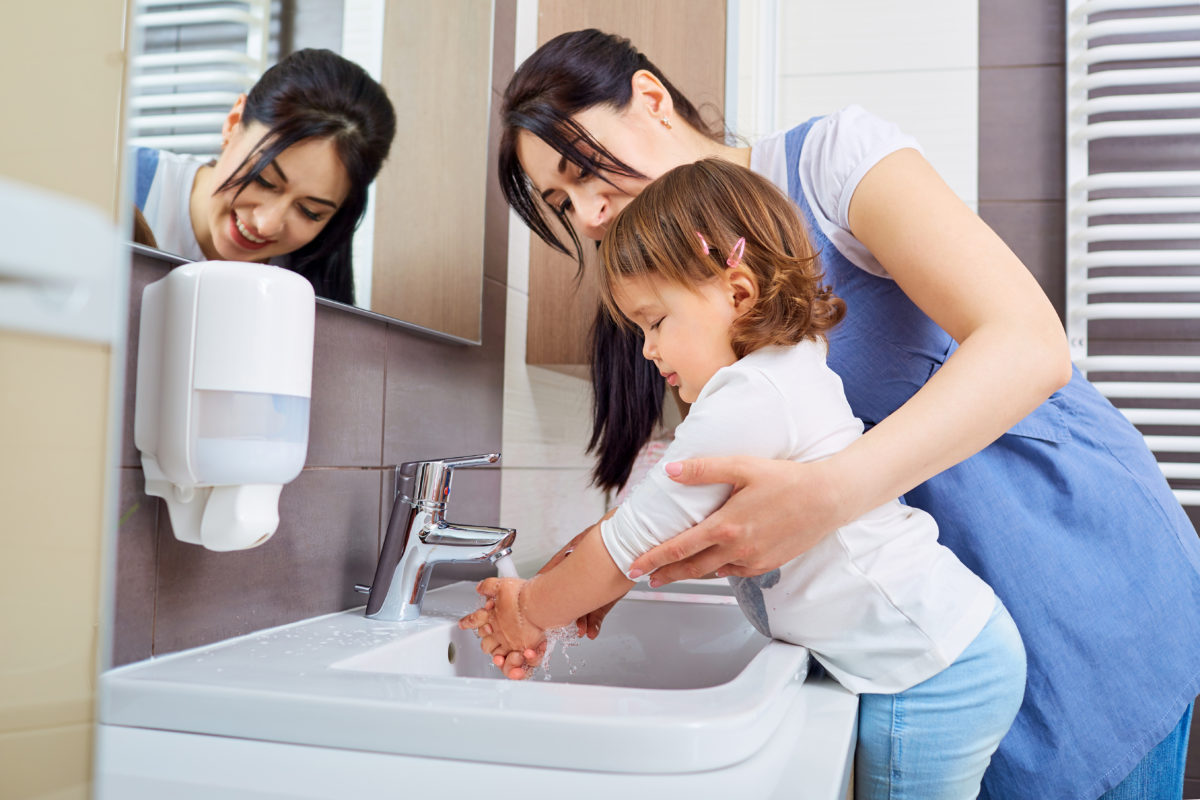
There’s an old saying that says, “Monkey see, monkey do.” Since most children learn by mimicking their parent, showing them the proper way to use the bathroom can help them feel more comfortable with it.
In the early days of the process, make it a habit to take your child into the bathroom with you when you go – even when in public. And let them know that their older siblings use the potty too – they’re not alone!
“Some kids are really motivated by their peers or siblings who are potty trained,” says Katie Lockwood, M.D., a board-certified pediatrician at Children’s Hospital of Philadelphia (CHOP) in Pennsylvania.
6. Use Target Practice for Boys
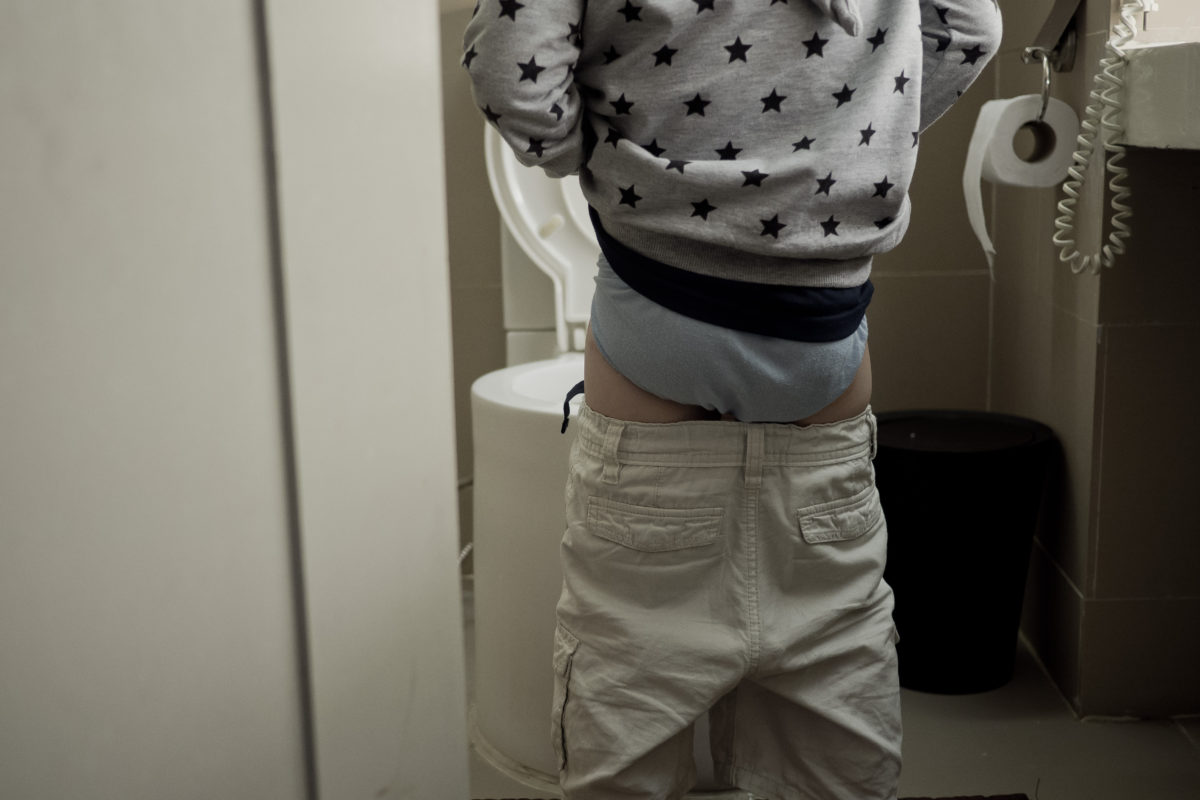
When potty training a boy, it’s best to start with them peeing while sitting down. Over time, you can start to teach them how to stand up and maintain balance when they pee – which doesn’t come easy to them.
One of the biggest problems you’ll run into is missing the toilet when they pee. It might sound funny, but turning their potty breaks into a game (like target practice) can help them be more accurate when peeing.
A good way to do this is to place a floating ring in the toilet water—something like a Cheerio or Froot Loop would be perfect. The game is fairly straightforward: stay focused and try to pee in the middle of the ring.
5. Read Books & Watch Videos
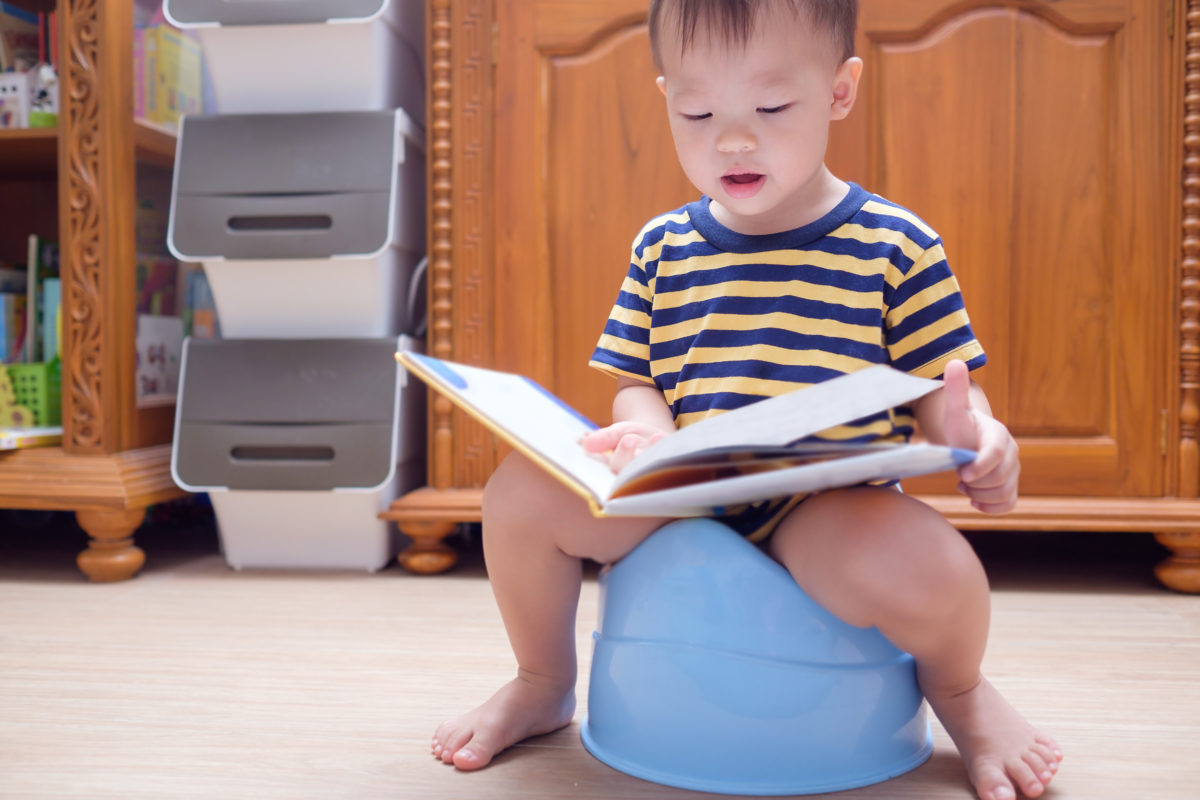
We already discussed the importance of giving your child a book to read or a game to play while on the toilet, but the potty training process happens all day long – not just when they’re sitting on the potty.
That’s why I recommend reading potty training books when sitting on the couch or as a bedtime story. You can also throw on potty training-inspired shows and clips – many of which can be found on YouTube.
Some of our favorite potty training books include Potty by Leslie Patricelli, Once Upon a Potty by Alona Frankel, Time to Pee! by Mo Willems, and Pirate Potty and Princess Potty (both by Samantha Berger).
4. Teach Them the Importance of Hygiene

Potty training doesn’t end at showing them how to pee and poop. You also have to teach them the importance of hygiene when using the bathroom – including wiping properly and washing their hands.
The key is to weave hygiene practices into the fabric of potty training in a way that is both natural and engaging. This usually begins by setting a good example – show your child how you would do it.
Children may not always remember to wash their hands or wipe properly at first, but gentle reminders and consistent practice solidify these habits. Over time, hygiene will become a normal part of their routine.
3. Expect Mistakes & Happy Little Accidents
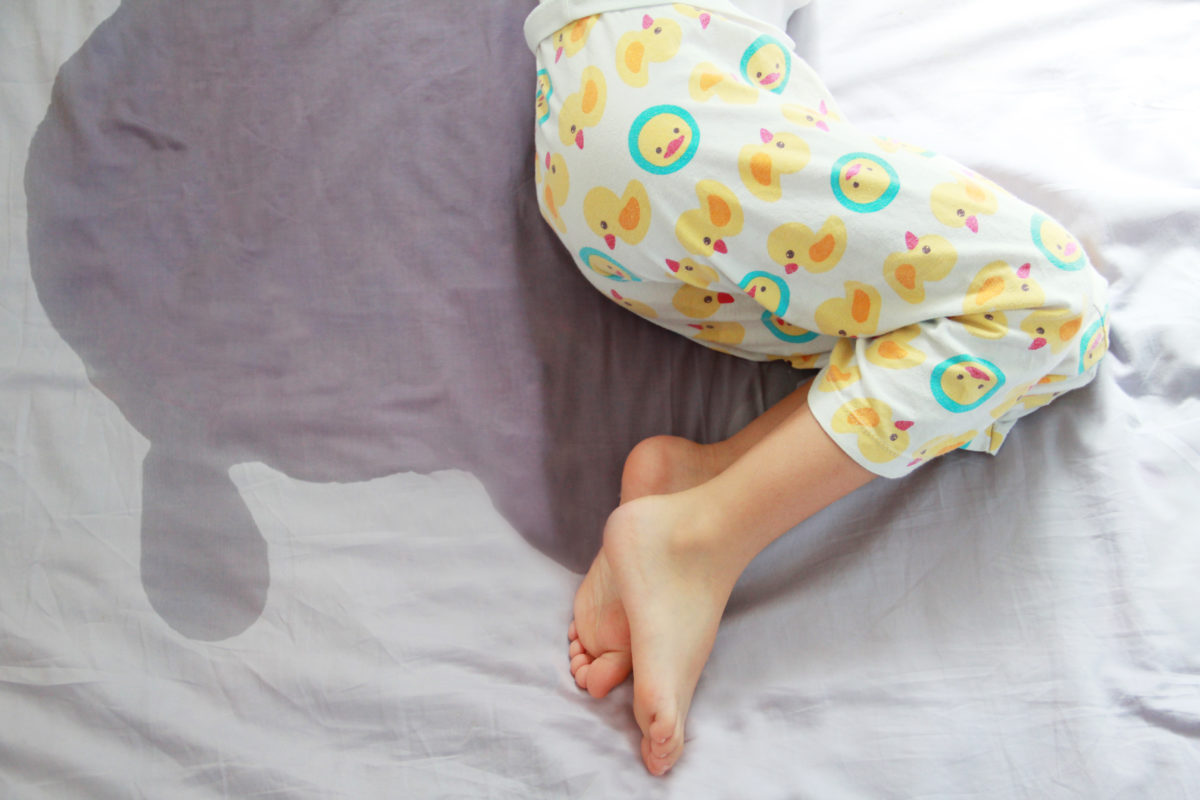
There’s an old quote from Bob Ross that applies here. “There are no mistakes, just happy little accidents,” he says – something you could teach your child, not just about potty training, but about life, in general.
Don’t expect your child to be perfect when potty training – especially for the first time. They’re bound to make a mess and they’ll likely forget to follow certain protocols, but don’t punish them over this.
Instead, use it as a teaching moment. Let them know it was just a ‘happy little accident’ and show them how to be better next time. Added pressure only makes things worse, so stay positive and proud!
2. Expect Setbacks & Regression
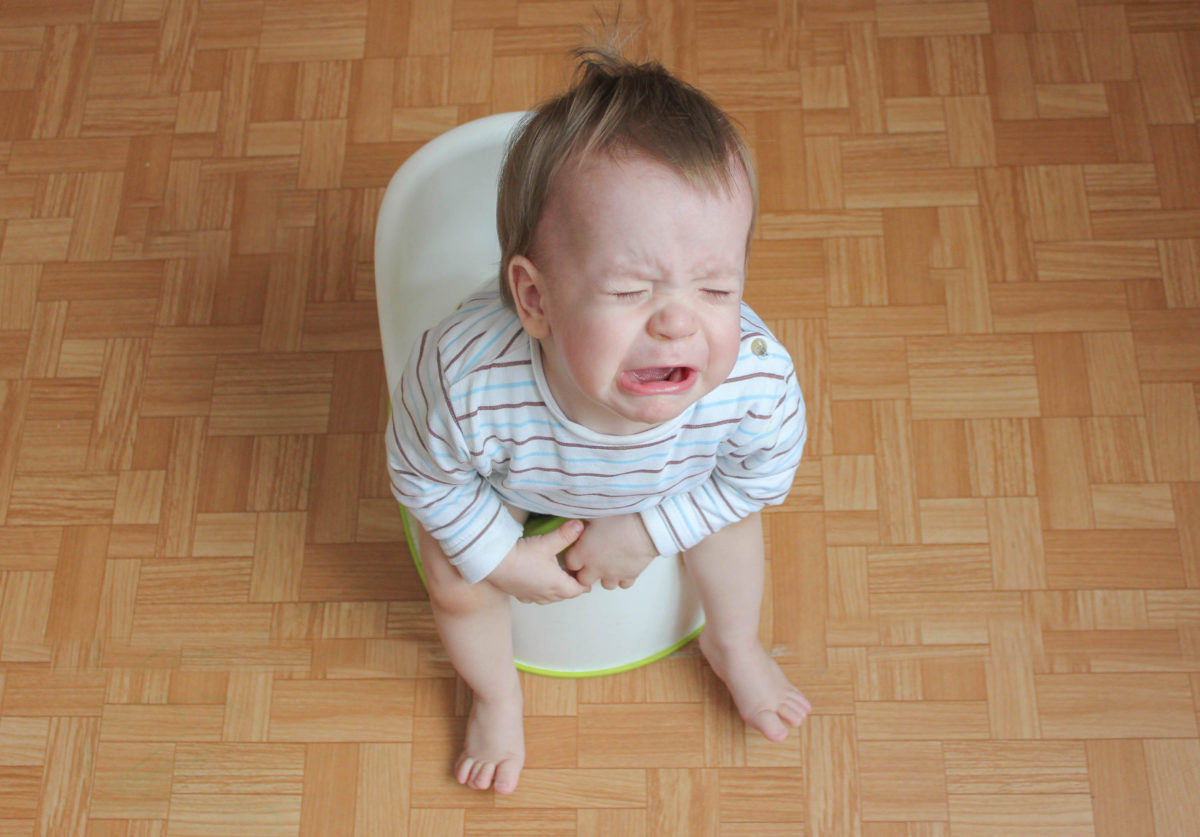
Aside from mistakes, your child is bound to face some setbacks and/or regression when potty training. In fact, more than 80% of children face setbacks when potty training, according to UC Davis Health.
Don’t worry – this is a normal and natural part of the learning process. Potty training isn’t always going to be as smooth sailing as we want it to be, but that doesn’t mean you should grow discouraged over it.
Setbacks are going to happen, but use it as a sign that your child might not be ready to use the bathroom yet. It’s okay to put potty training on hold for a couple of weeks (or even a month) until they feel ready.
1. Be Patient – It Won’t Happen Overnight!
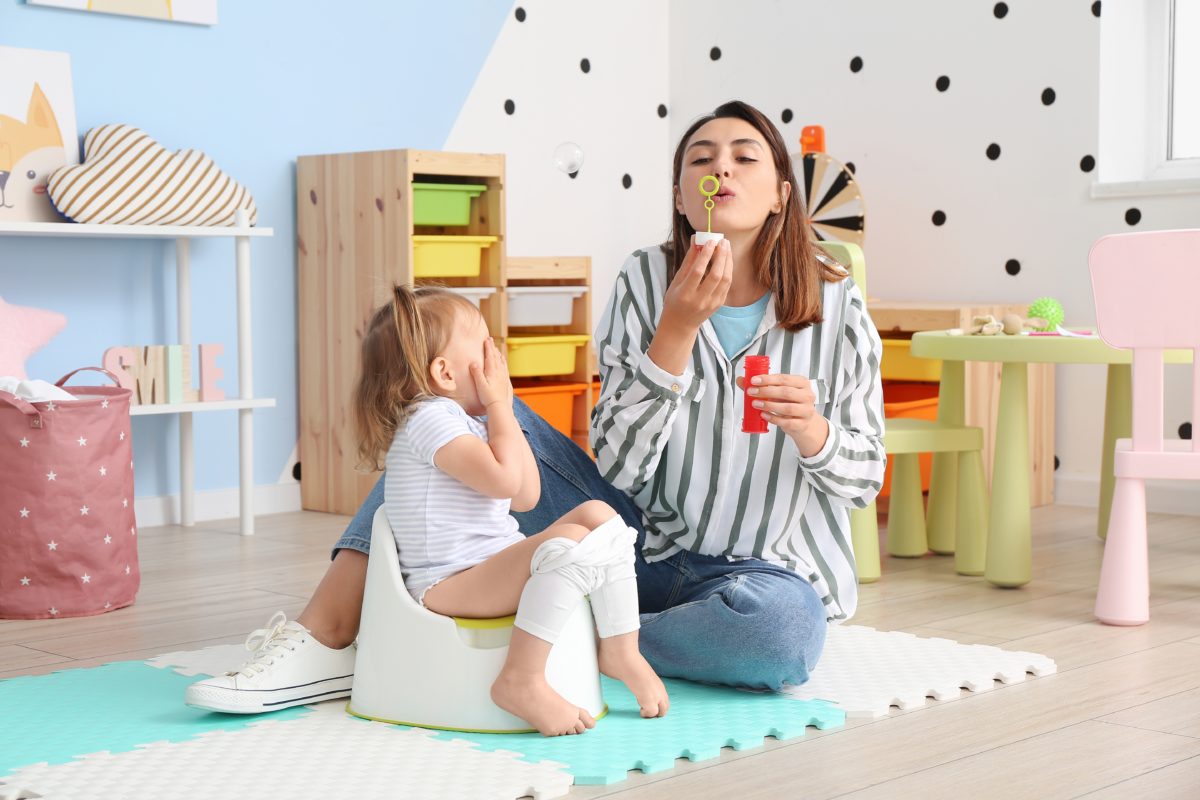
That leads me to my final piece of advice – be patient. While many parents find success right away when potty training their child, it won’t be that easy for everyone – and it could take a year for them to catch on.
Patience conveys to the child that it’s okay to make mistakes (as explained above) and that learning new skills is a process that takes time. Results won’t happen overnight, but they will happen eventually!
Moreover, a patient approach allows parents to remain calm and responsive rather than reactive, enabling them to provide consistent guidance and support. In a way, it helps set the tone for what’s to come.
When Should You Consult With a Doctor?
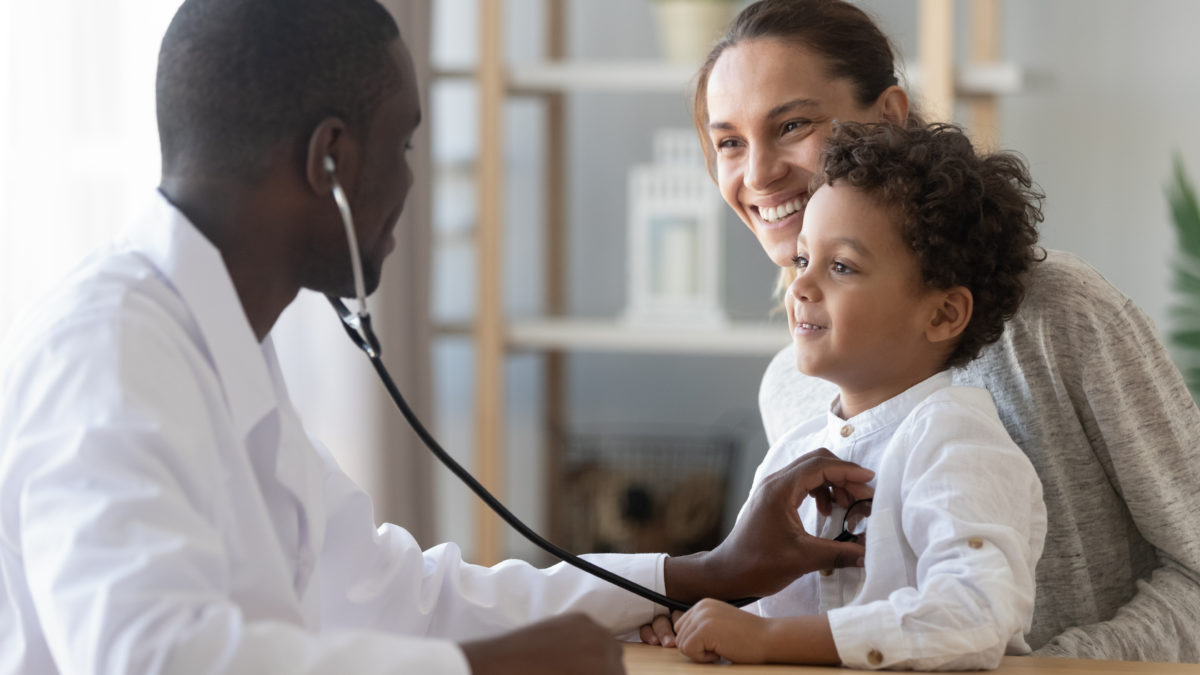
While setbacks and regression are to be expected, there comes a time when parents might need the help of a professional – and that’s okay! It’s nothing to be ashamed of and is more common than you’d think.
With that said, here are some of the signs you should consult with your child’s pediatrician:
No bowel movements in three days. Complaints of pain when going to the bathroom. Lack of control over bladder or bowel movements. Blood stains in underwear. Frequent bed-wetting. And lack of progress.
As a general rule of thumb, if your child is four years old and not yet potty trained, it’s time to seek help.
YOU MAY ALSO LIKE: A Dad Who Is Potty-Training His Daughter Asked Other Dads Which Bathroom They Take Their Daughters To: Here Are 20 Responses
The good news is that pediatricians and other childcare professionals are trained and experienced in helping children overcome the many challenges they face when learning how to use the toilet, so don’t hesitate to reach out for help. And if you need some extra advice, our online community is here for you!
Mamas Uncut is THE online place for moms. We cover the latest about motherhood, parenting, and entertainment as well – all with a mom-focused twist. So if you're looking for parenting advice from real parents, we have plenty of it, all for moms from moms, and also experts. Because, at the end of the day, our mission is focused solely on empowering moms and moms-to-be with the knowledge and answers they’re looking for in one safe space.
